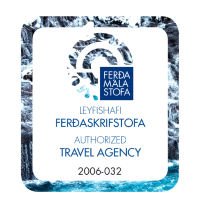
The Hornstrandir Nature Reserve is known for the stunning scenery and unspoiled nature adding it to many hiker’s bucket lists. The area is the northernmost part of the Westfjords and is extremely remote with almost no infrastructure. Through different eyes, it is viewed as the perfect hiking area, the off-track running hinterland, wildlife explorers paradise, outdoor yoga oasis, or just the right place for slow travelers looking to stop for a mindfulness moment in the ideal setting.
The Hornstrandir Nature Reserve was established in 1975 and is now under the rule of the Environment Agency of Iceland (www.umhverfisstofnun.is) which is responsible for the preservation of the area and its fragile infrastructures like the camping areas, trails, and signs. The boundaries of the area are in the Skorarheiði moor between the fjords of Hrafnfjörður and Furufjörður. The reserve area thus covers the Hornstrandir region, part of the Jökulfirðir fjords (or the rural district of Sléttuhreppur), and part of the district of Grunnavíkurhreppur.
History

Through the ages, nature and human life in Hornstrandir were closely interwoven. Traditional agriculture was always limited; instead, the inhabitants based their livelihood on the sea and bird cliffs. Trips between farms were difficult, during the wintertime. Outlaws traveled to Hornstrandir to board foreign ships and leave the country. On top of all this, attacks by polar bears could also be expected. As a result of these conditions, the history of the region assumes a depth that gives an added dimension to visits to the nature reserve. The primary factor that made farming in Hornstrandir different from that of other parts of the country was the struggle with the bird cliffs. The cliffs were an important source of food, but their utilization was hazardous.
Social changes resulted in the abandonment of all farms during World War II and the post-war period. The land is mostly private property and the landowners are entitled to its traditional utilization, i.e. eider farming, fishing in rivers and lakes, hunting birds, and gathering eggs. A few dozen houses are located within the Nature Reserve are, both old, renovated farmsteads and new summer cottages. People often spend the whole summer in these houses, and travelers must refrain from pitching their tents too close to them.
Flora

About 260 species of flowering plants and ferns are known to grow in the nature reserve area. Most of these species are common in the West Fjords, but there are also rare species in the region. The region has been preserved against grazing for several decades helping the flora to reach an altitude of 300-400 meters. Examples of beautiful plants in the reserve are sea pea and sea lungwort, which can be seen on the beaches. The sea lungwort is edible and nutritious and we recommend you try it.
Because of heavy snowfall, the land is in the process of shedding its cover of snow throughout the summer. The vegetation is therefore extremely sensitive and must be approached with great care.
Fauna

Field mice are common in the area, but foxes are the prevailing mammals. Seals are a common sight on the beach. About 30 species of birds nest in the nature reserve and many more species can be observed. The most interesting points for bird watching are the bird cliffs, Hornbjarg, Hælavíkurbjarg, and Riturinn, with their abundance of birds.














